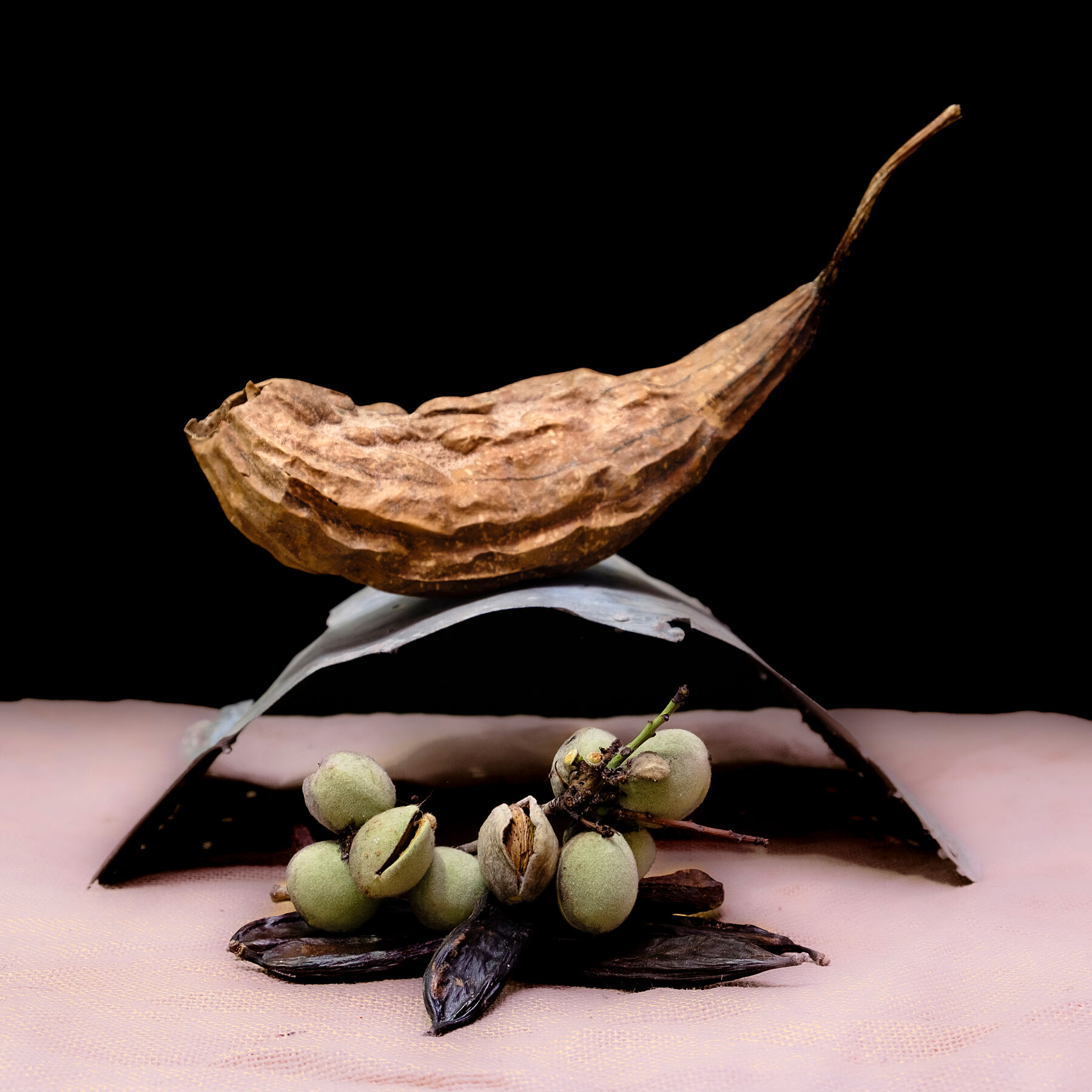Still life with luffa
The yellow ocher dried vegetable in the still life is a luffa. Luffas are probably more known for the luxury sponges you can find in the organic sections of department stores. I knew them as natural sponges until we started to grow them in the garden. The luffa plant is quite large and climbs up on everything it can find. In our case, it climbed all the way up into the almond tree that stood nearby.
You can also eat the luffa if you pick them when they are smaller. They have a courgette-like taste and can be used in pastas or grilled.
Harvesting luffas involves waiting for them to turn yellow and dry out completely. Once they reach this stage, they are ready to be picked. The dried luffas are then peeled to reveal a fibrous interior filled with seeds. Removing the seeds can be a bit of a process, but once they’re out, you’re left with a natural sponge. We use the sponges for doing the dishes and they are completely biodegradable, making them an eco-friendly alternative to synthetic sponges.
If picked while still young and tender, luffas are also edible. They have a mild, courgette-like flavour and can be used in various dishes. We’ve enjoyed them grilled, added to pasta, or even stir-fried. The versatility of the luffa plant makes it a valuable addition to our garden and we’re planning to grow some more next year.
The other parts of the still life are almonds and carob beans, two classic items cultivated in the Valencian province. Almonds grow in a soft green shell. When this shell starts to open around September, the almonds fall to the ground, sometimes with the soft shell attached. You peel the soft green shell from the almond nut and are left with the hard nut shell we know. For consumption, of course, you have to crack this hard shell too.
Recently, very young almonds have been recognized as a superfood. You harvest them when the green shell is still closed and the inner casket hasn’t hardened yet. When super young, they taste fresh and you can already detect a hint of marzipan. Since almonds are a classic agricultural product of our region, it’s no surprise that we have many turrón shops nearby. Turrón is a kind of marzipan traditionally eaten at Christmas in Spain, available in many flavours, but the classic ingredients are almonds and honey.
Under the almonds, you can see the long brown carob beans. Carob used to be food for donkeys and goats but recently has been discovered by the beauty industry and is used in many organic beauty products. It’s also used as a chocolate substitute due to its dark, sweet flavour. You can eat it raw and taste the sweetness of the bean. Many elderly Spanish people will tell you that this was a treat when they were children, especially in times of poverty.
I’ve used carob flour myself for baking bread. Mixed with whole wheat flour, it gives the bread a lovely spongy and sweet texture.
So, in the end, the still life here is made up of local products like luffa, almonds, and carob beans that I find in my garden. I’ve seen them grow and dry, which gives a sense of a life cycle.
- The photograph is printed on high quality Canson Baryta paper, specially designed for fine art photography.
- It is a 300 gram paper that has a high archival value.
- The printing process is completely 100% carbon neutral.
- The photos have a small white border that makes framing much easier. You can also find my signature here.
- Available in 3 sizes. Small-medium-large (A4,A3,A2)
- The medium A3 size (30×42 cm) is available with a frame.
- Edition of 5
90,00 € – 470,00 €

